Mechanism of Stratum Instability and Dynamic Deformation under Discontinuous Boundary Conditions
Abstract
:1. Introduction
2. Characteristics of Rock Movement in the Fault Zone
2.1. Characterization of Rock Movement
2.2. Fault Mechanics Model
3. Model of Relationship between Fault Plane and Stratum Movement Line
4. Existence Analysis of Separation Space
4.1. Mechanical Determination of Critical Layer Slip Instability
4.2. Mechanics Determination of Deflection Instability of Key Stratum
5. Analysis of Discontinuous-Boundary Fault Plane Abscission Layer under the Influence of Mining
5.1. Fault Activation Analysis and Mechanical Judgment of Coal Seam Mining
5.2. Key Layer Sliding Verification
5.3. Critical Layer Deflection Verification Calculation
6. Numerical Simulation Analysis of Discontinuous-Boundary Fault Activation
7. Conclusions
- (1)
- The expression of the rock movement line and the distance u(x) from different horizontal heights of the rock movement line to the fault plane were obtained using the dip angle of the fault and the angle of rock movement.
- (2)
- The criterion for the activity instability of rock layers in the fault zone was obtained through material mechanics analysis, and the mechanical criterion at the end of the rock layer can determine the range of bending and sinking zones.
- (3)
- Data validation was conducted on the key layer slip mechanics model and the key layer displacement instability model through on-site cases.
- (4)
- Through numerical simulation and zoning monitoring of vertical stress on the upper, middle, and lower parts of the fault, combined with the vertical stress distribution map and plastic zone distribution map of the mining area, it was found that the upper rock layer of the fault has been activated, and the middle rock layer of the fault zone is affected by the joint action of the upper rock layer’s unloading zone and the protective coal pillar’s stress-concentration zone. The surrounding rock of the lower part of the fault zone is always in the stress-concentration zone.
- (5)
- Through the double-criterion mechanical model, it can be seen that increasing the width of the fault-protection coal pillar is the most effective means for the influence of smaller faults on overlying strata. At the same time, the stability of the surrounding rock near the goaf can be increased by grouting. It is also necessary to drill anchor cables in the vertical fault direction of the rock strata above the open-off cut to prevent the collapse of the boundary’s surrounding rock.
Author Contributions
Funding
Institutional Review Board Statement
Informed Consent Statement
Data Availability Statement
Conflicts of Interest
References
- Mu, C.; Yu, X.; Zhao, B.; Zhang, D.; Mao, X.; Zhu, J. The Formation Mechanism of Surface Landslide Disasters in the Mining Area under Different Slope Angles. Adv. Civ. Eng. 2021, 2021, 6697790. [Google Scholar] [CrossRef]
- Yu, W.; Pan, B.; Zhang, F.; Yao, S.; Liu, F. Deformation Characteristics and Determination of Optimum Supporting Time of Alteration Rock Mass in Deep Mine. KSCE J. Civ. Eng. 2019, 23, 4921–4932. [Google Scholar] [CrossRef]
- Yu, W.; Wu, G.; Pan, B.; Wang, C.; Li, K.; Liao, Z. Laboratory and field investigations of different bolting configurations for coal mine roadways in weak coal strata. Bull. Eng. Geol. Environ. 2021, 80, 8995–9013. [Google Scholar] [CrossRef]
- Wang, L.; Cheng, Y.; Xu, C.; An, F.-H.; Jin, K.; Zhang, X.-L. The controlling effect of thick-hard igneous rock on pressure relief gas drainage and dynamic disasters in outburst coal seams. Nat. Hazards 2013, 66, 1221–1241. [Google Scholar] [CrossRef]
- Li, Z.; Dou, L.; Cai, W.; Wang, G.; He, J.; Gong, S.; Ding, Y. Investigation and analysis of the rock burst mechanism induced within fault–pillars. Int. J. Rock Mech. Min. Sci. 2014, 70, 192–200. [Google Scholar] [CrossRef]
- Jiao, Z.; Zhao, Y.; Jiang, Y.; Wang, H.; Lu, Z.G.; Wang, X.Z. Fault damage induced by mining and its sensitivity analysis of influencing factors. J. China Coal Soc. 2017, 42, 36–42. [Google Scholar]
- Dou, L.; Mu, Z.; Li, Z.; Cao, A.Y.; Gong, S.Y. Research progress of monitoring, forecasting, and prevention of rockburst in underground coal mining in China. Int. J. Coal Sci. Technol. 2014, 1, 278–288. [Google Scholar] [CrossRef]
- Jiang, J.; Wu, Q.; Qu, H. Evolutionary characteristics of mining stress near the hard-thick over-burden normal faults. J. Min. Saf. Eng. 2014, 31, 881–887. [Google Scholar]
- Pan, L.; Zhang, L.; Liu, X. Practical Technology of Rock Burst Prediction and Prevention; China University of Mining and Technology Press: Xuzhou, China, 2006; pp. 132–143. [Google Scholar]
- Pan, Y.; Li, Z.; Zhang, M. Distribution, type, mechanism and prevention of rockburst in China. Chin. J. Rock Mech. Eng. 2003, 22, 1844–1851. [Google Scholar]
- Liu, Y.; Jin, G.; Zhao, Y. Experimental study on fault rockburst instability by loading rate and fault dip. Rock Soil Mech. 2022, 43, 35–45. [Google Scholar]
- Wang, Y.; Liu, X.; Zhang, M.; Bai, X. Effect of Roughness on Shear Characteristics of the Interface between Silty Clay and Concrete. Adv. Civ. Eng. 2020, 2020, 8831759. [Google Scholar] [CrossRef]
- Yang, Z.; Wang, H.; Sun, D.; Ma, X.J.; Xu, M.B.; Si, N.X. Study on Occurrence Mechanism of Coal Pillar in L-Shaped Zone during Fully Mechanized Mining Period and Prevention Technology. Shock. Vib. 2021, 2021, 6638009. [Google Scholar] [CrossRef]
- YU, W.; Li, K.; Liu, Z.; An, B.; Wang, P.; Wu, H. Mechanical Characteristics and Deformation Control of Surrounding Rock in Weakly Cemented Siltstone. Environ. Earth Sci. 2021, 80, 1–15. [Google Scholar] [CrossRef]
- Zhou, K.; Dou, L.; Gong, S.; Li, J.; Zhang, J.; Cao, J. Study of Rock Burst Risk Evolution in Front of Deep Longwall Panel Based on Passive Seismic Velocity Tomography. Geofluids 2020, 2020, 8888413. [Google Scholar] [CrossRef]
- Jiang, F.; Yang, S.; Cheng, Y.; Zhang, X.M.; Mao, Z.; Xu, F.J. A study on microseismic monitoring of rockburst incoal mine. Chin. J. Geophys. 2006, 49, 1511–1516. [Google Scholar]
- Wang, J.; Liu, H.; Li, T. Study on numerical simulation of dynamic risk regionalization during exploitation approaching to faults. Chin. J. Rock Mech. Eng. 2007, 26, 28–35. [Google Scholar]
- Stewart, R.; Reimold, W.; Charlesworth, E.; Ortlepp, W. The nature of a deformation zone and fault rock related to a recent rockburst at Western Deep Levels Gold Mine. Tectonophysics 2001, 337, 173–190. [Google Scholar] [CrossRef]
- Myer, L.R. Fractures as collections of cracks. Int. J. Rock Mech. Min. Sci. 2000, 37, 231–243. [Google Scholar] [CrossRef]
- Skrzypkowski, K.; Zagórski, K.; Zagórska, A.; Apel, D.B.; Wang, J.; Xu, H.; Guo, L. Choice of the Arch Yielding Support for the Preparatory Roadway Located near the Fault. Energies 2022, 15, 3774. [Google Scholar] [CrossRef]
- Zhu, Y.; Li, P.; Wang, P.; Mei, C.; Ren, H.; Wang, X. Mechanical Characteristics of Pre-Peak Unloading Damage and Mechanisms of Reloading Failure in Red Sandstone. Appl. Sci. 2022, 12, 13046. [Google Scholar] [CrossRef]
- Li, P.; Zhu, Y.; Wang, P.; Mei, C. Radial Depth Damage Properties of Coal Tunnels Surrounded by Rock under Excavation and Unloading. KSCE J. Civ. Eng. 2023, 27, 2287–2296. [Google Scholar] [CrossRef]
- Guo, H.; Yu, W.; Liu, Y.; Zhang, Z.; Kang, X. Study on the Dynamic Instability Mechanism of the Rock Formation in the Multifault Structure Zone of the Stope. Geofluids 2022, 2022, 8382493. [Google Scholar] [CrossRef]
- Qi, Y.; Yu, W.; Yu, D.; Guo, H.; Pan, B. Research on the Deformation Law and Stress Distribution Characteristics of Overburden under the Influence of Multiple Faults. Adv. Civ. Eng. 2023, 2023, 9919993. [Google Scholar] [CrossRef]
- Wu, Z.; Pan, P.; Pan, J. Analysis of mechanism of rock burst and law of mining induced events in graben structural area. Rock Soil Mech. 2021, 42, 2225–2238. [Google Scholar]
- Wang, H.; Jiang, Y.; Jiang, C.; Di, J.H.; Liu, Y.Y. Characteristics of overlying strata movement in double fault area under the dynamic pressure. J. Min. Saf. Eng. 2019, 36, 513–518. [Google Scholar]
- Tang, C.; Wang, J.; Zhang, J. Preliminary engineering application of microseismic monitoring technique to rockburst prediction in tunneling of Jinping II project. J. Rock Mech. Geotech. Eng. 2010, 2, 193–208. [Google Scholar] [CrossRef]
- Han, K.; Yu, Q.; Zhang, H.; Li, F.M. Mechanism of fault activation when mining on hang-ing-wall and foot-wall. J. China Coal Soc. 2020, 45, 1327–1335. [Google Scholar]
- Zuo, J.; Wu, G.; Sun, Y.; Yu, M. Investigation on the inner and outer analogous hyperbola model (AHM) of strata movement. J. China Coal Soc. 2021, 46, 333–343. [Google Scholar]
- Qian, M.; Liao, X.; He, F. Key block analysis of ‘masonry beam’ structure in stope. J. China Coal Soc. 1994, 6, 557–563. [Google Scholar]
- Yu, Q.; Zhang, H.; Deng, W.; Bai, Z.; Zhang, G.; Zou, Y. Study on the Setting Method of Fault Protection Coal Pillar with Different Dip Angles. In Proceedings of the 11th National Coal Industry Production Frontline Youth Technical Innovation Collection; China Coal Industry Publishing House: Beijing, China, 2018; pp. 1–5. [Google Scholar]
- Qian, M. Control of Mine Pressure and Rock Strata; China University of Mining and Technology Press: Xuzhou, China, 2010. [Google Scholar]
- Liu, H. Mechanics of Materials; Higher Education Press: Beijing, China, 2011. [Google Scholar]
- Norris, A. The isotropic material closest to a given anisotropic material. J. Mech. Mater. Struct. 2005, 1, 223–238. [Google Scholar] [CrossRef]
- Hong, S.I.; Park, J.W.; Jung, Y.H.; Ann, K.Y. Modelling Pore Structure of Cement Based Material According to Continuous Network System. Appl. Mech. Mater. 2014, 578–579, 1531–1537. [Google Scholar] [CrossRef]
- Cai, M. Rock Mechanics and Engineering; Science Press: Beijing, China, 2013. [Google Scholar]
- Buyanovskii, I.A.; Tatur, I.R.; Strelnikova, S.S.; Samusenko, V.D.; Kal’yanova, O.A. Investigation of the Destruction of Lubricating Layers of Sulfonate Greases under Friction and Corrosion. J. Frict. Wear 2023, 44, 229–233. [Google Scholar] [CrossRef]
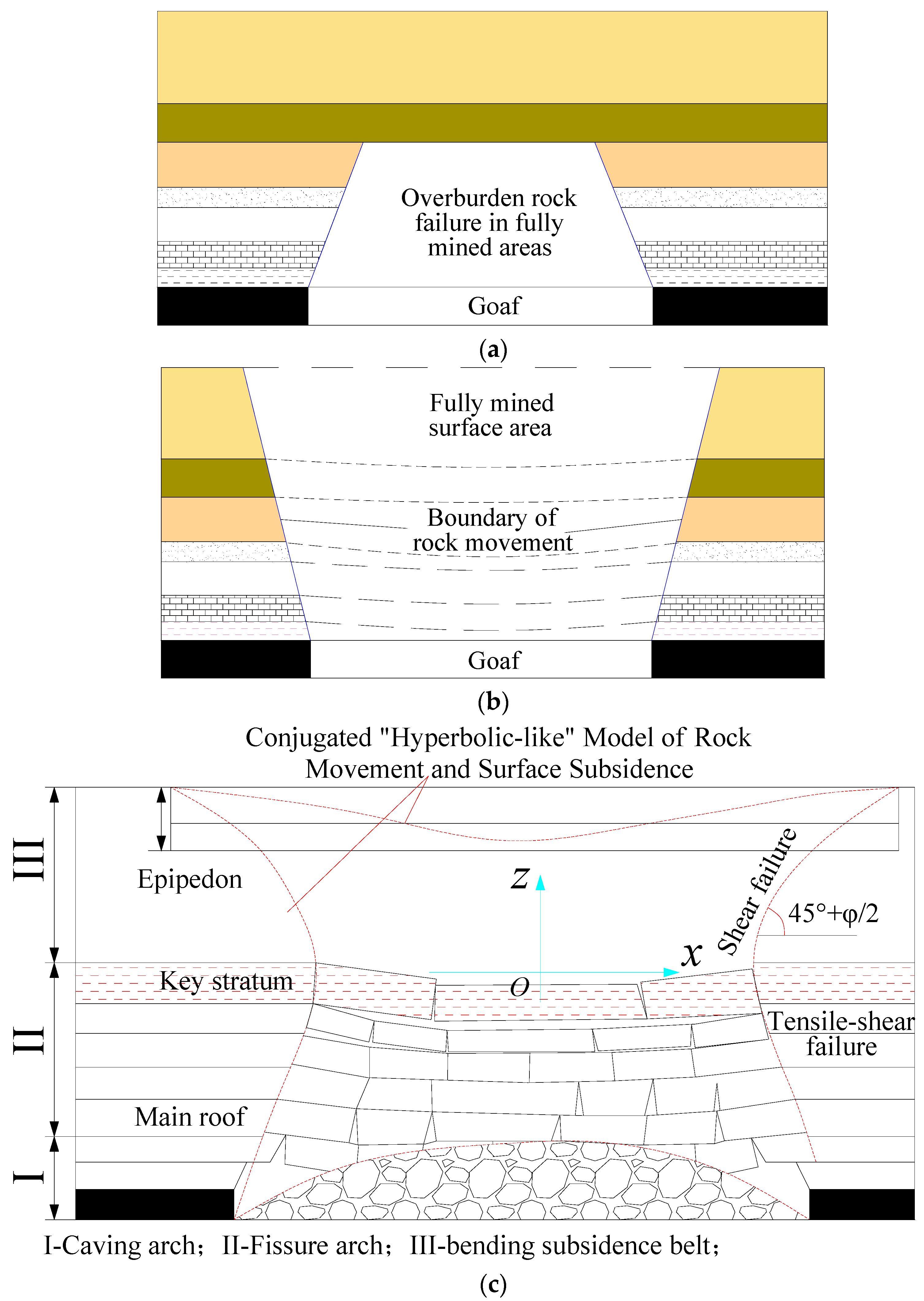
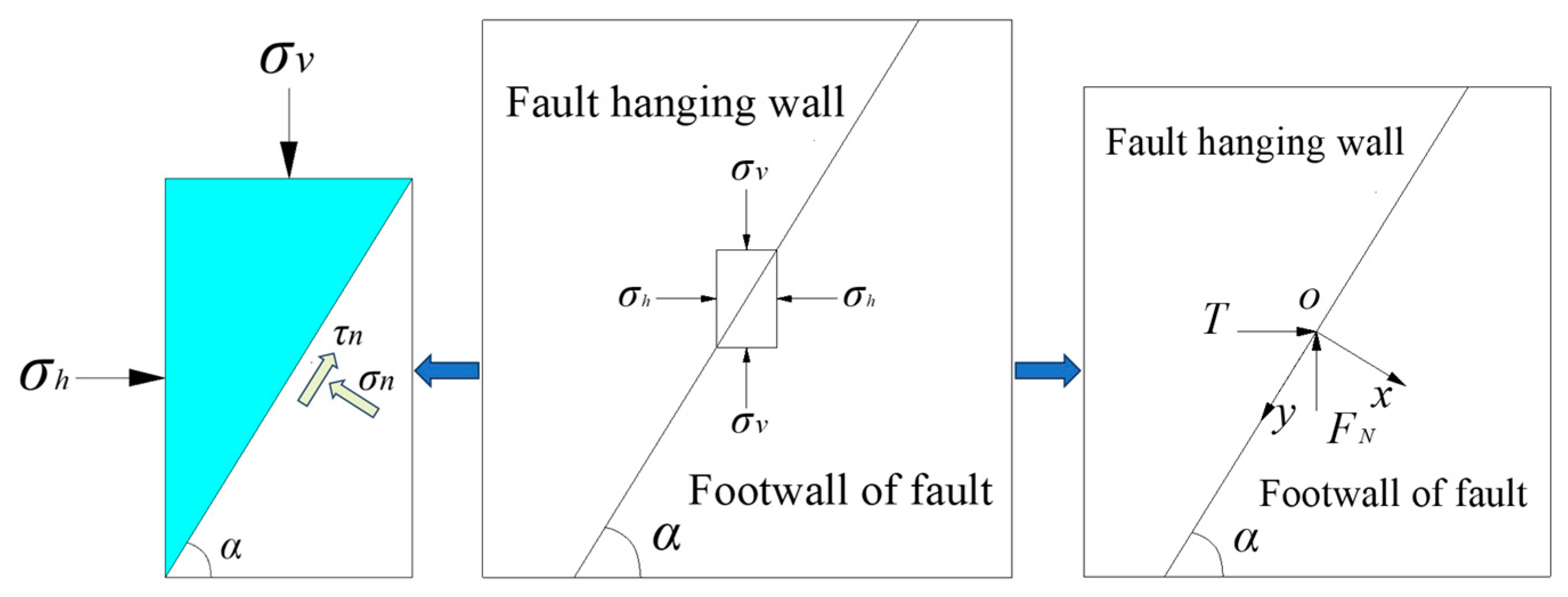
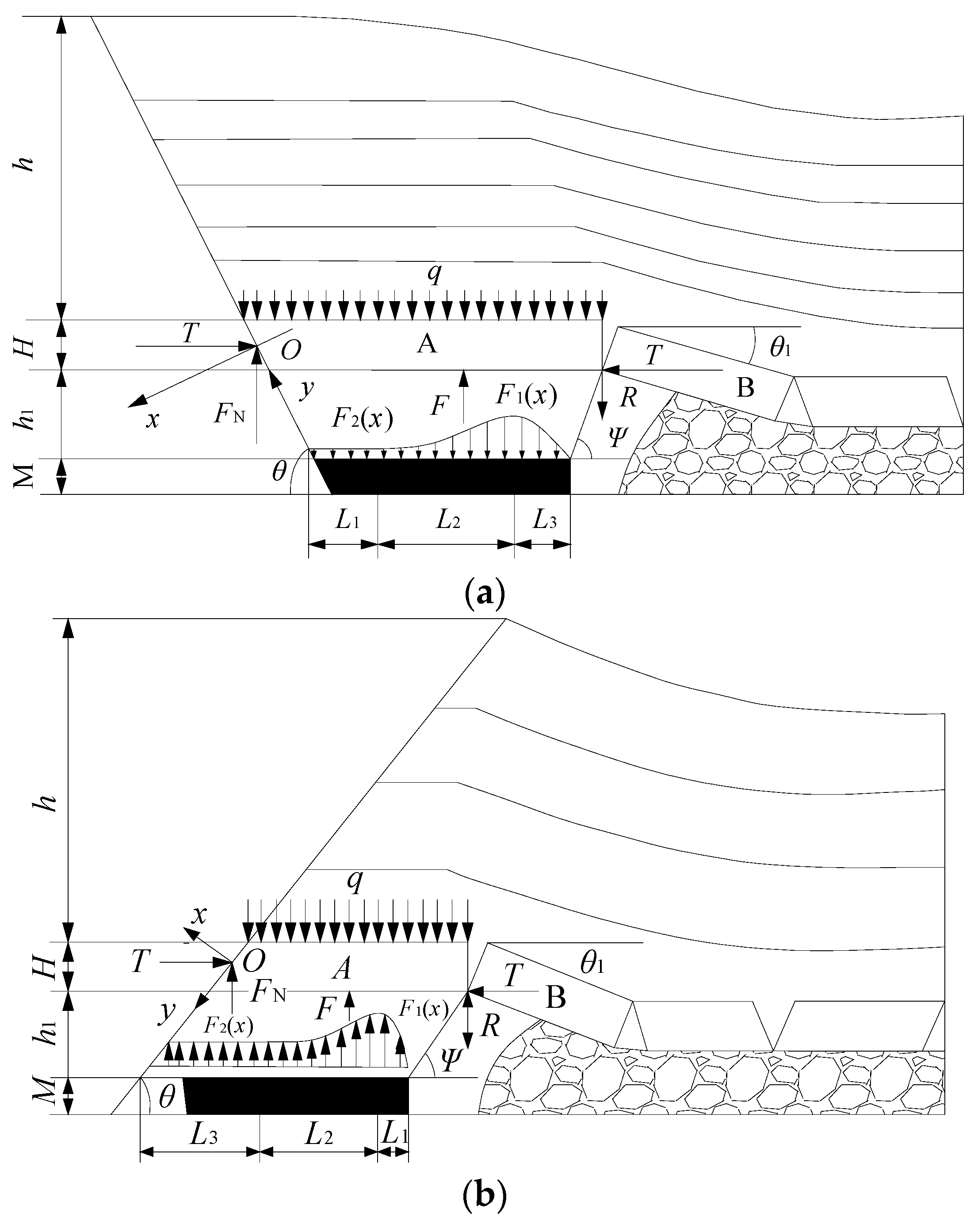
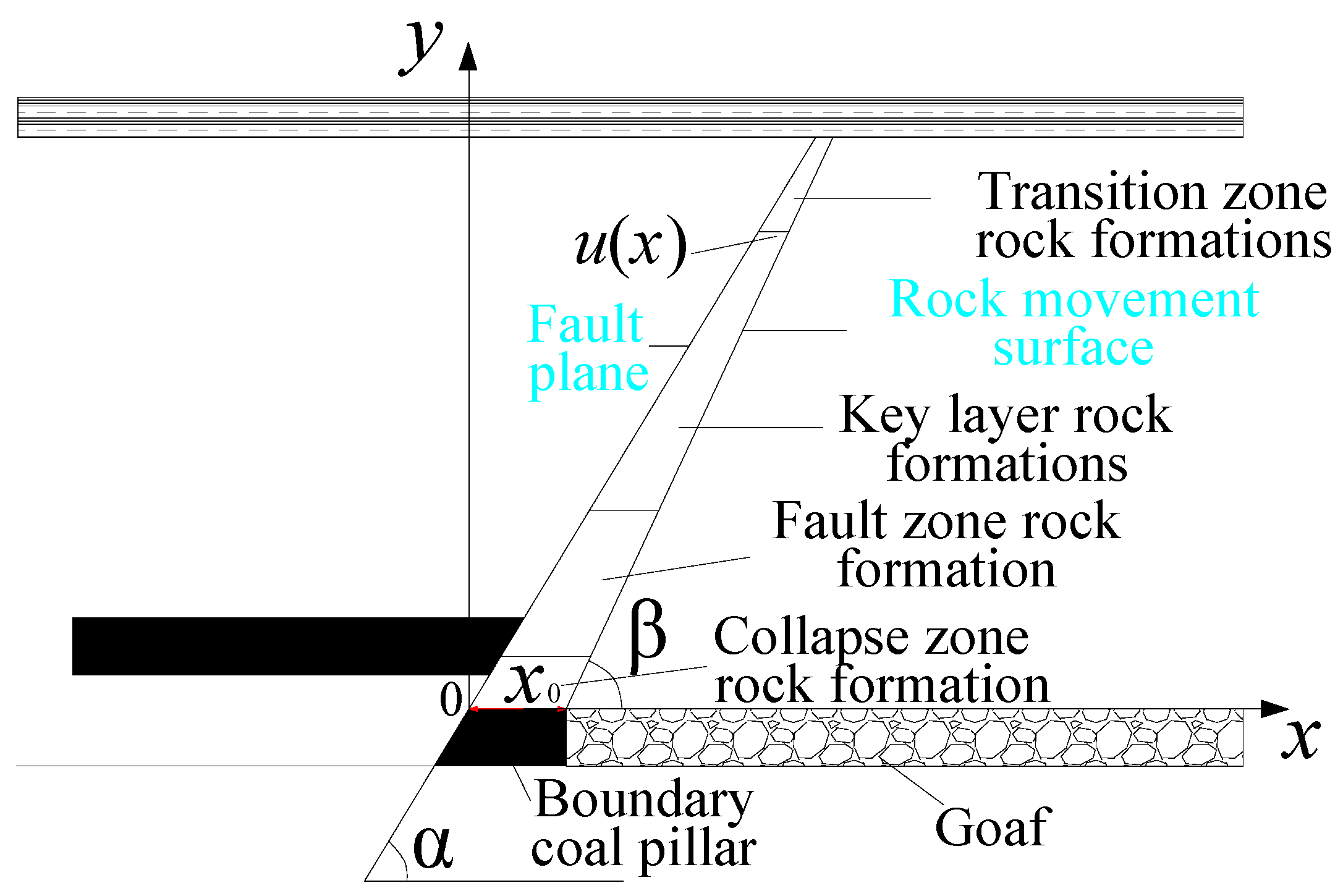
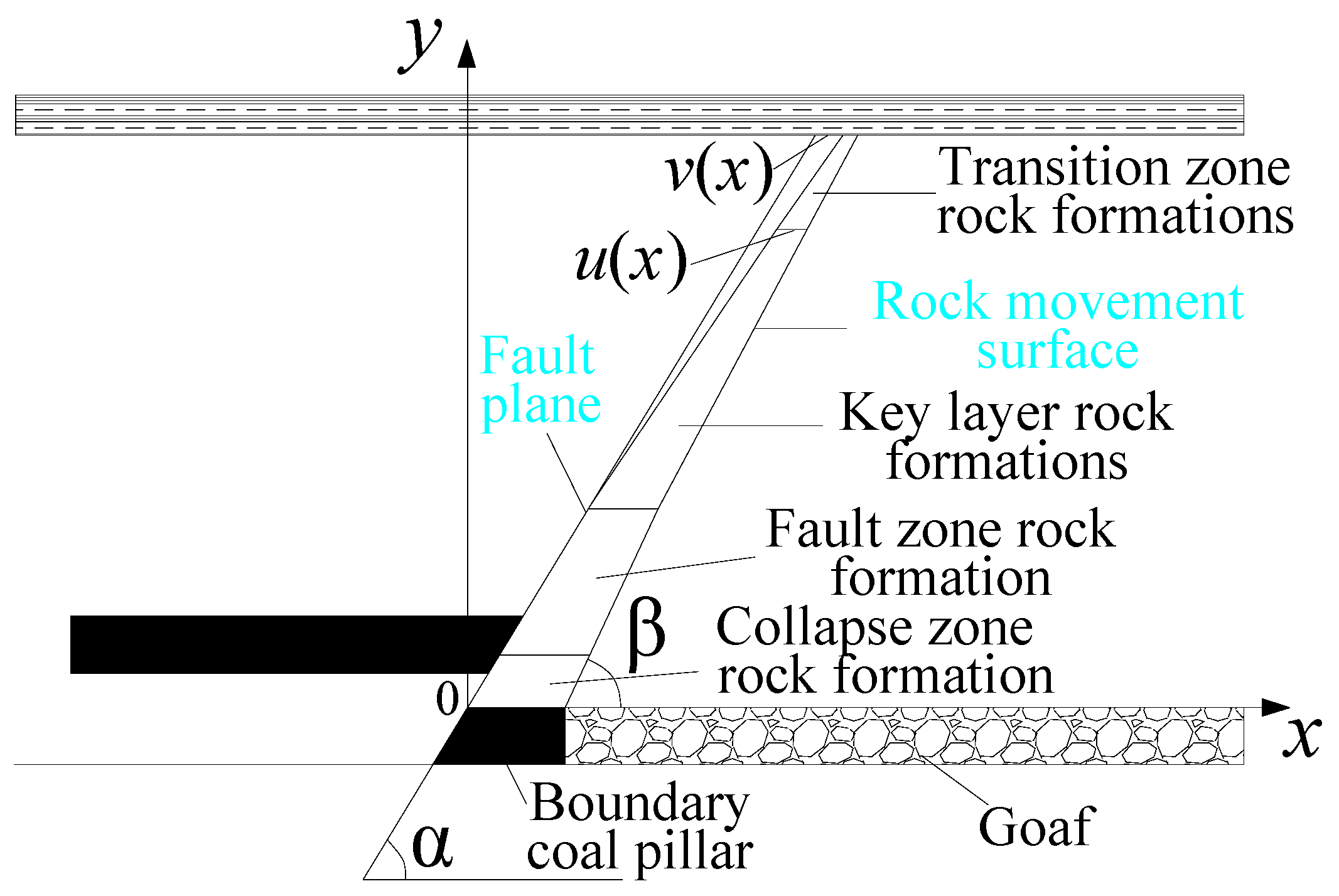
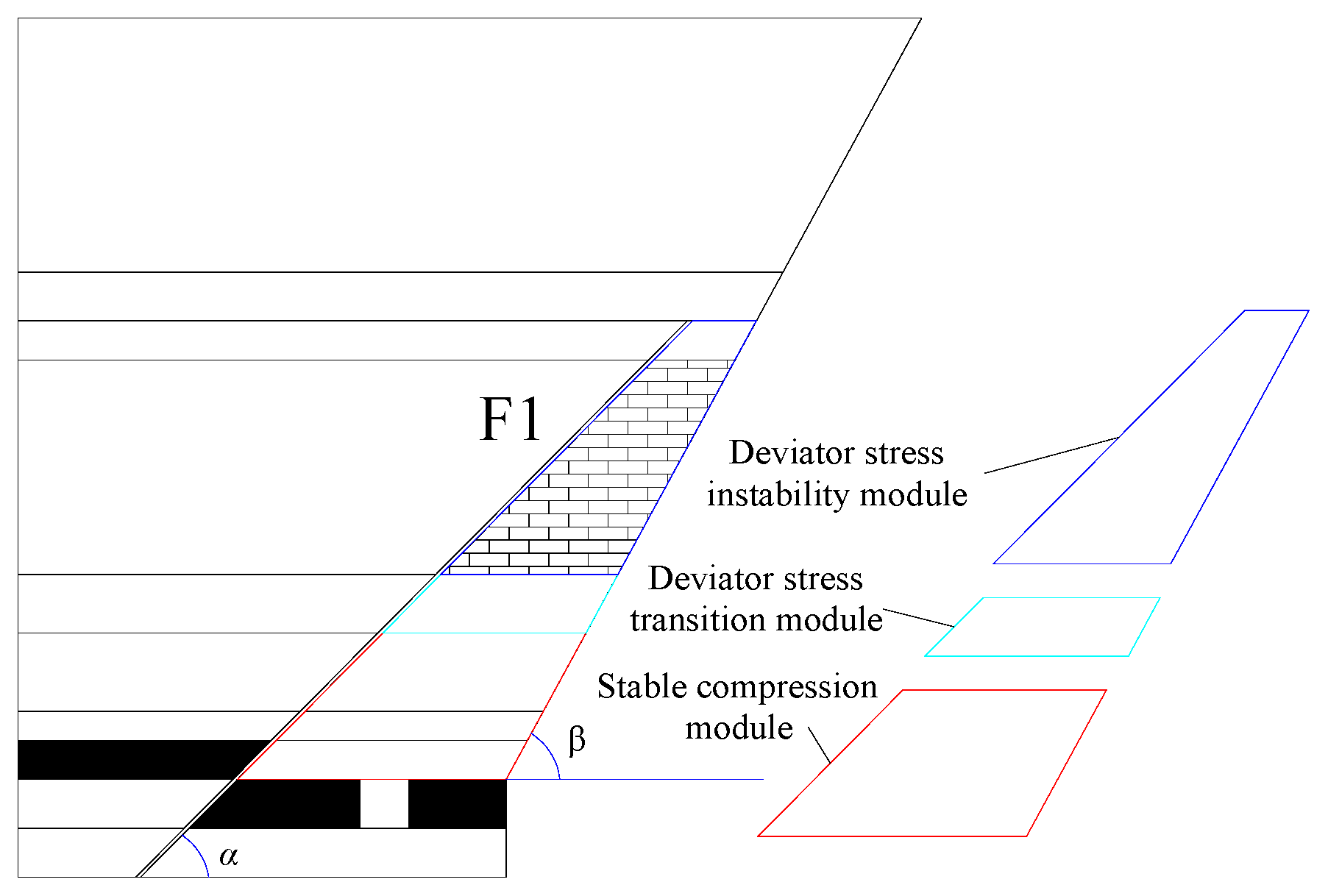
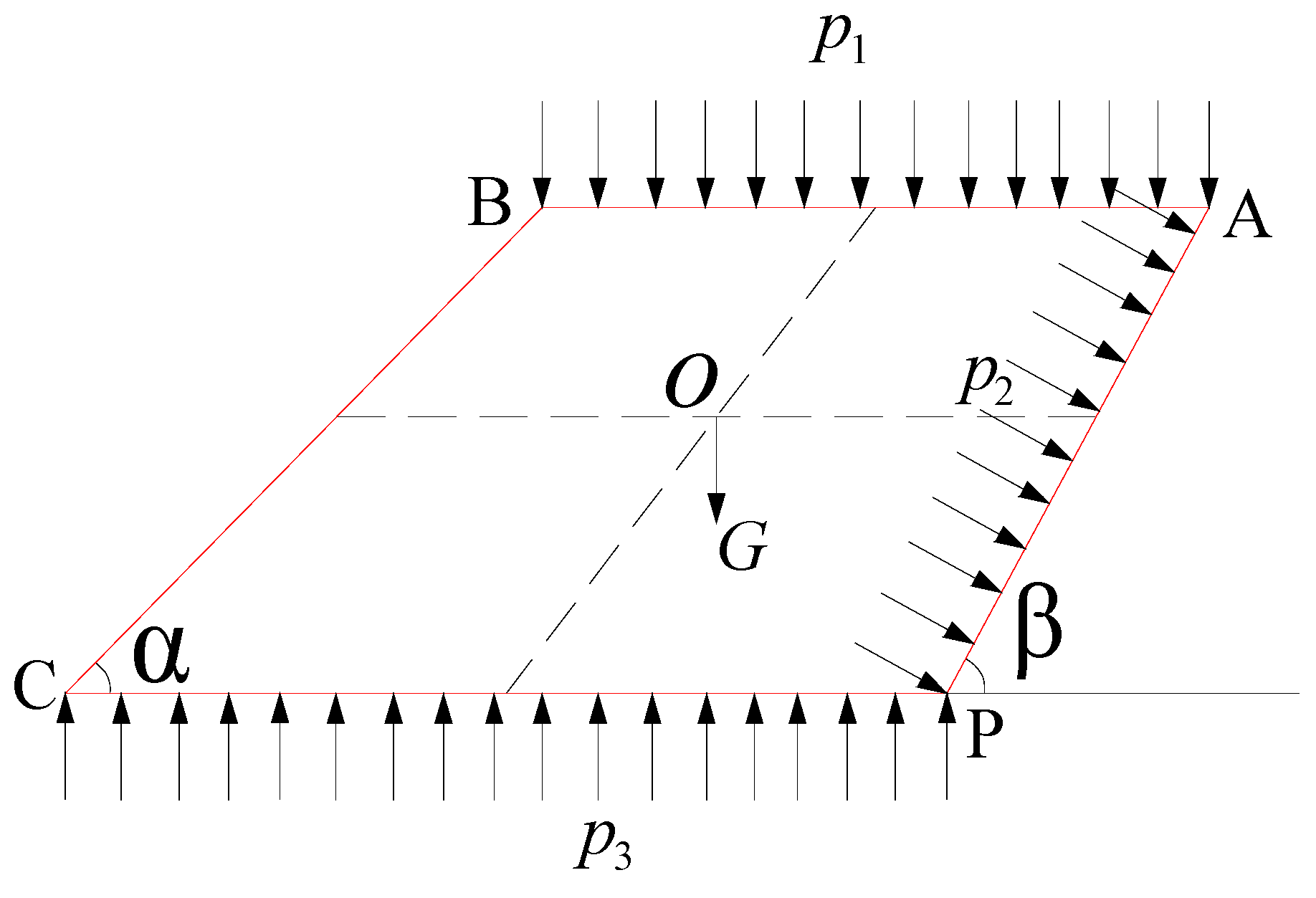
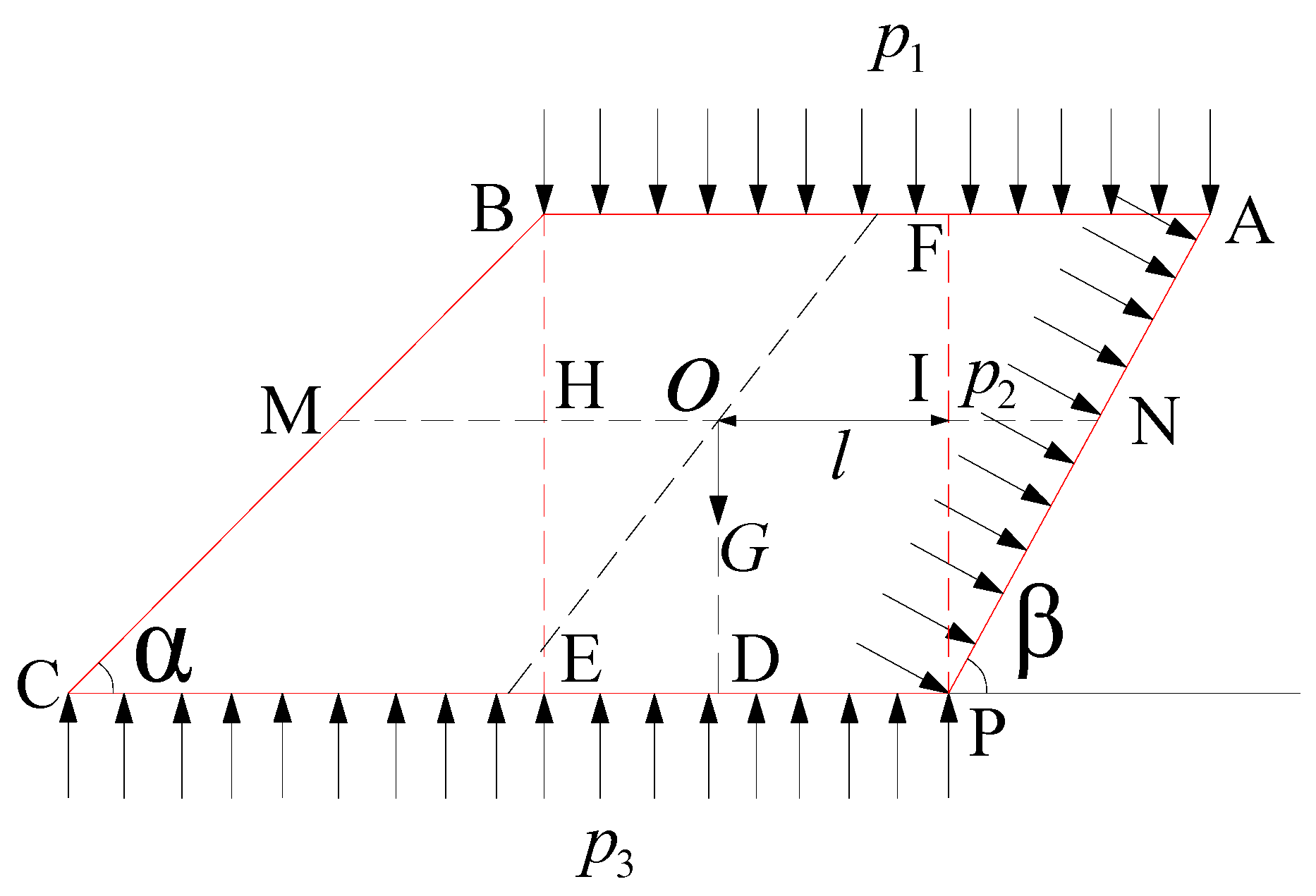
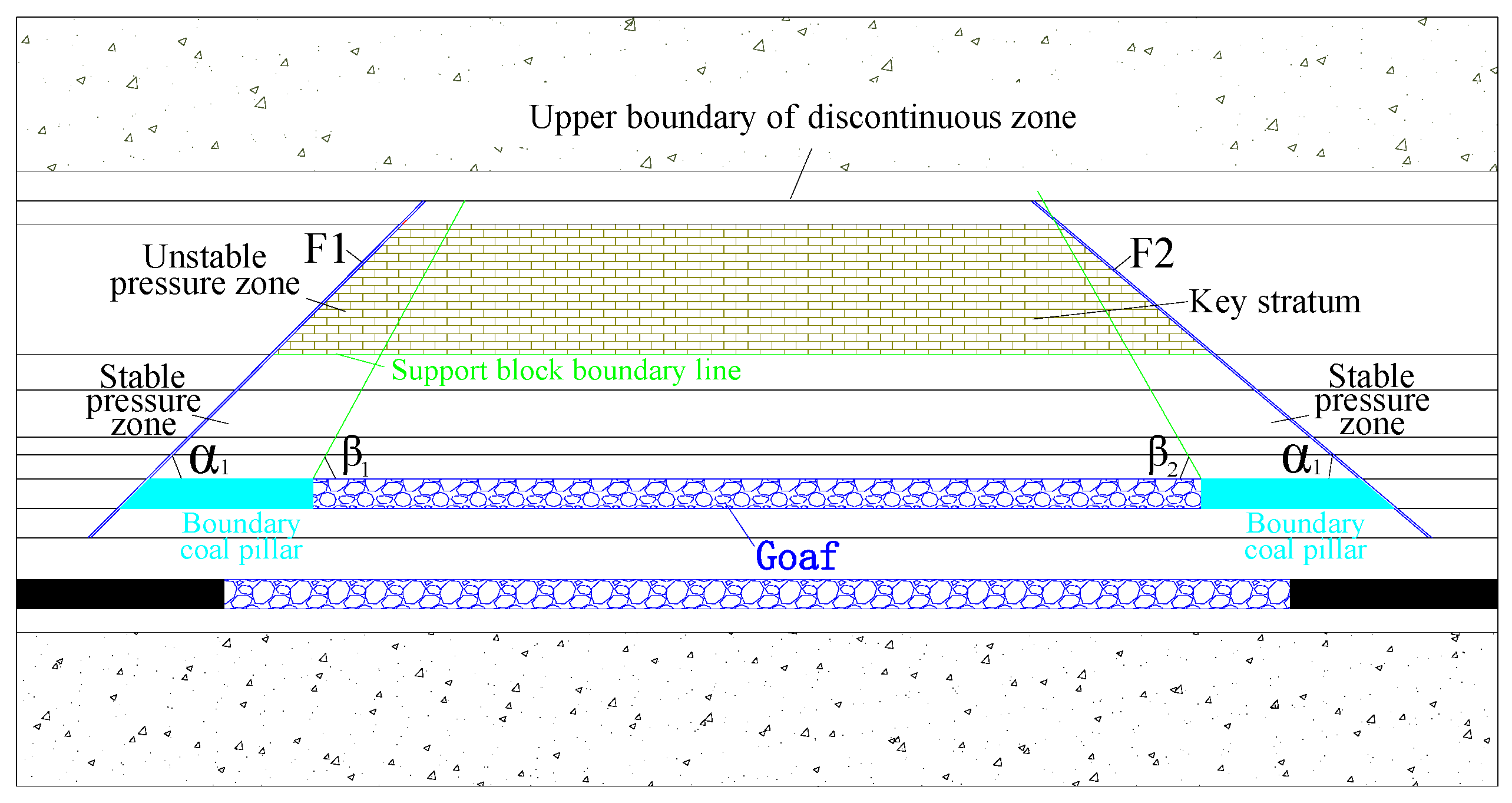

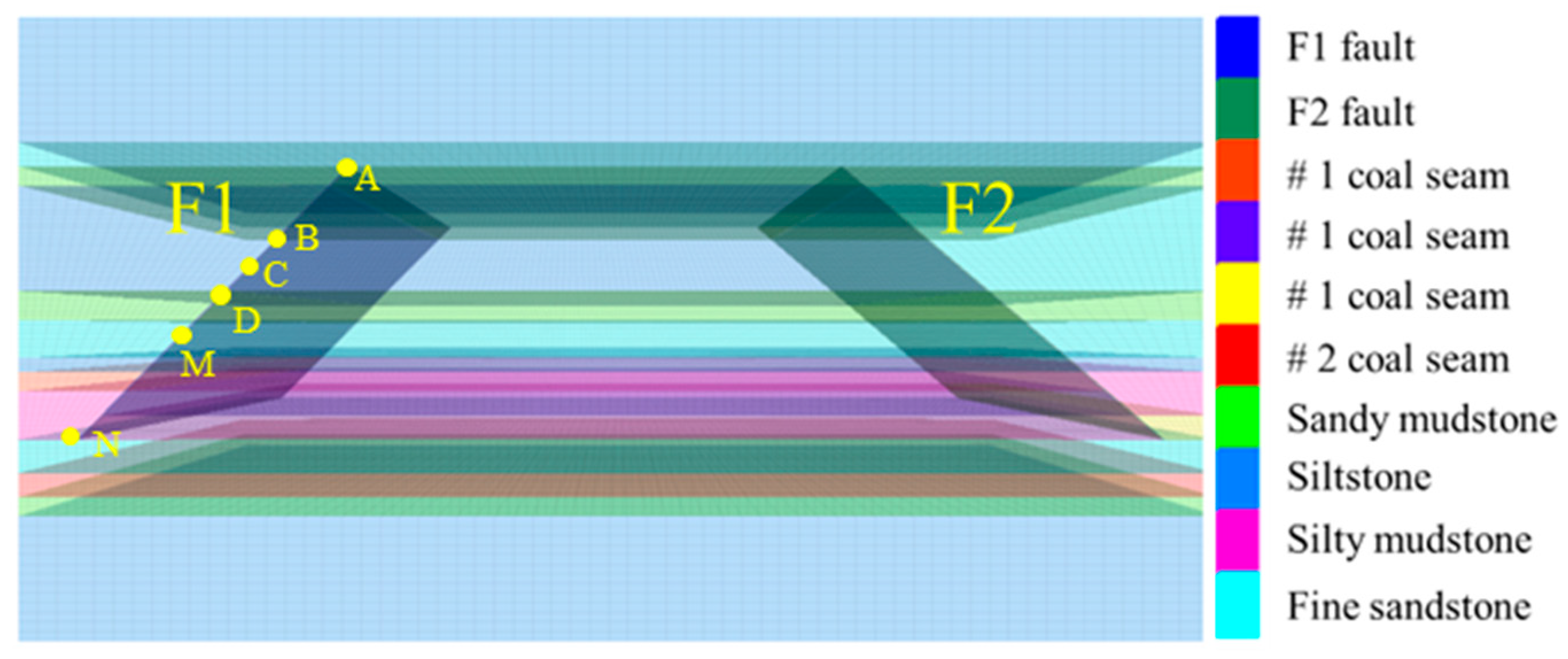
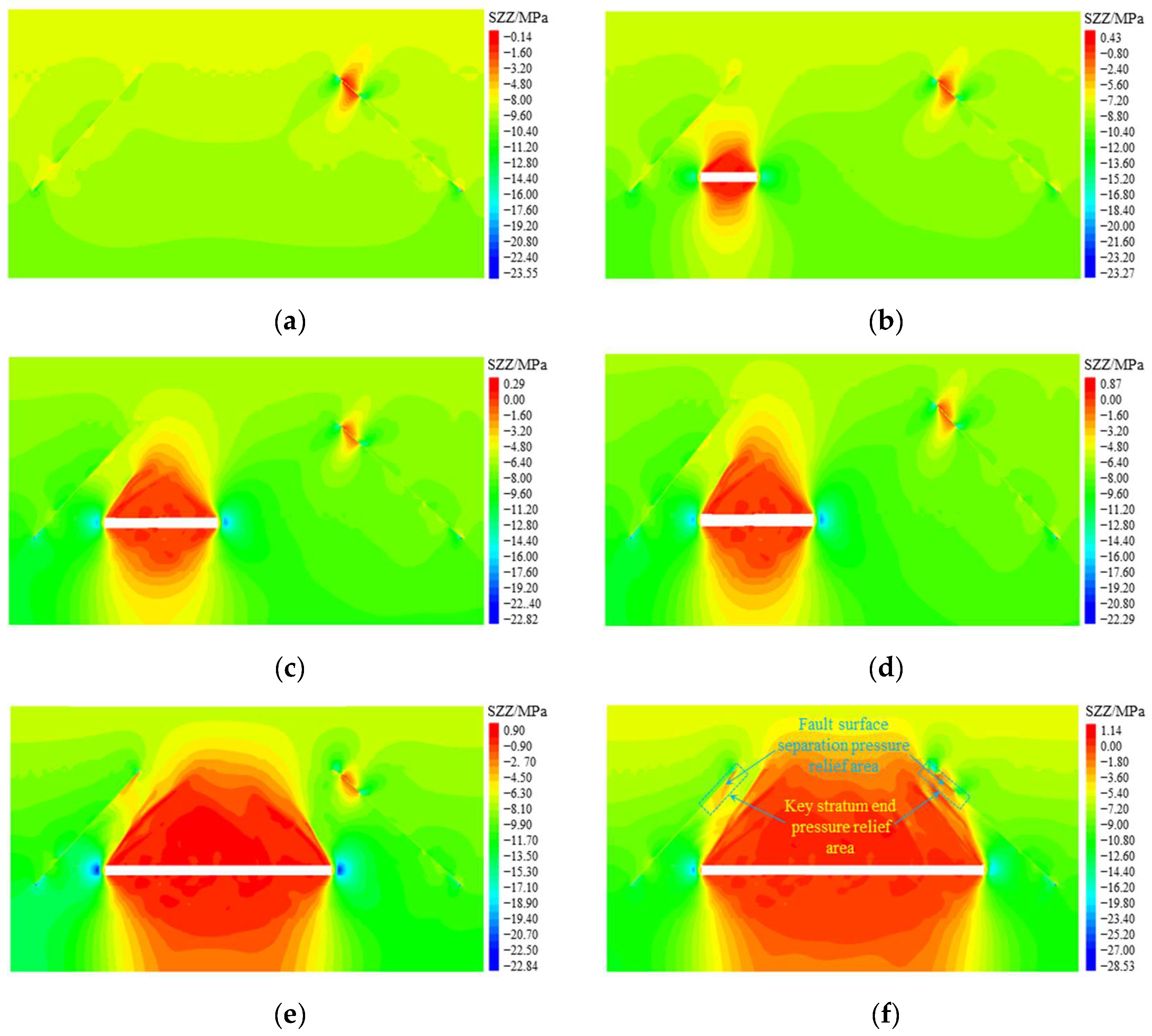
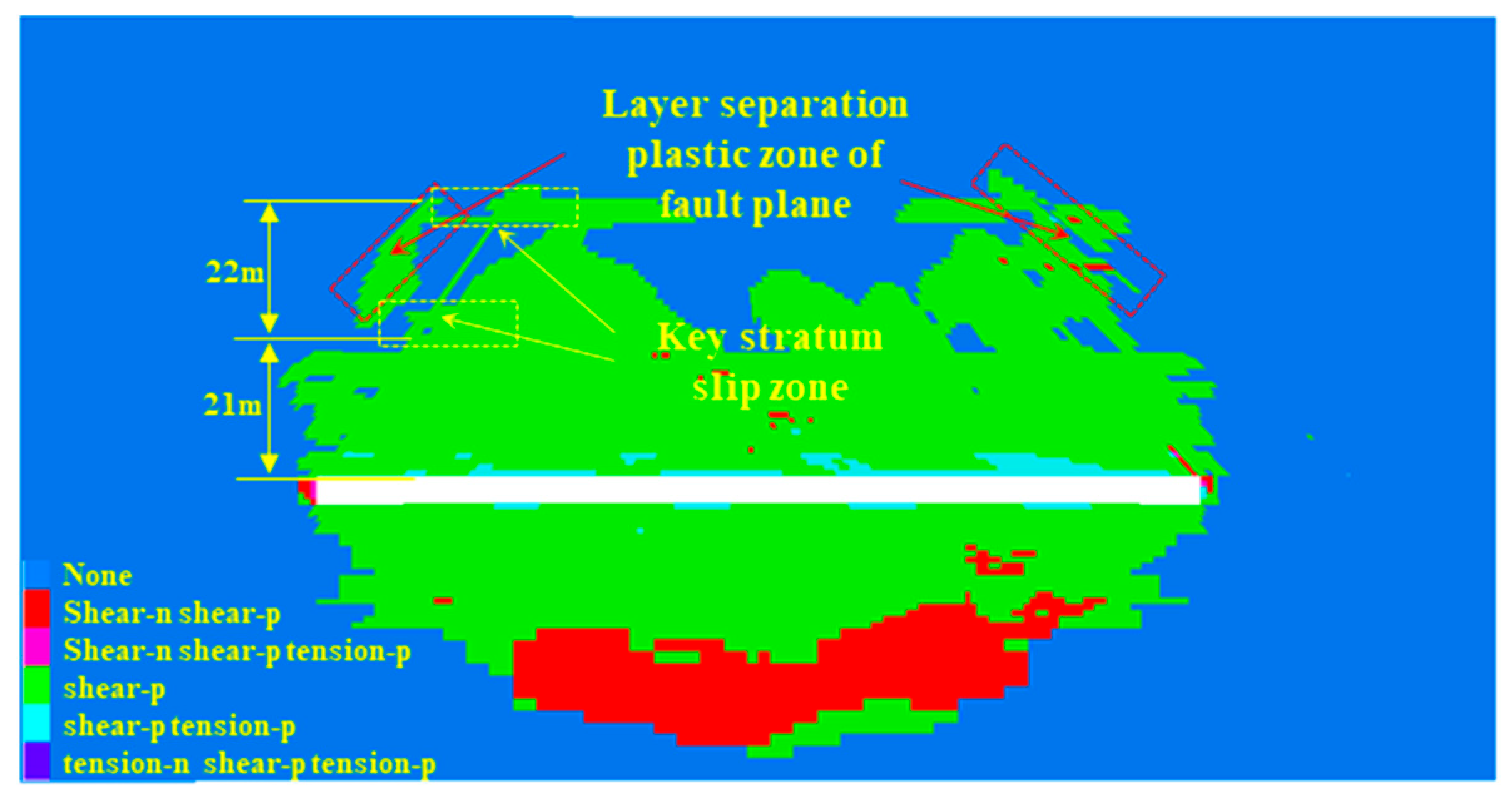
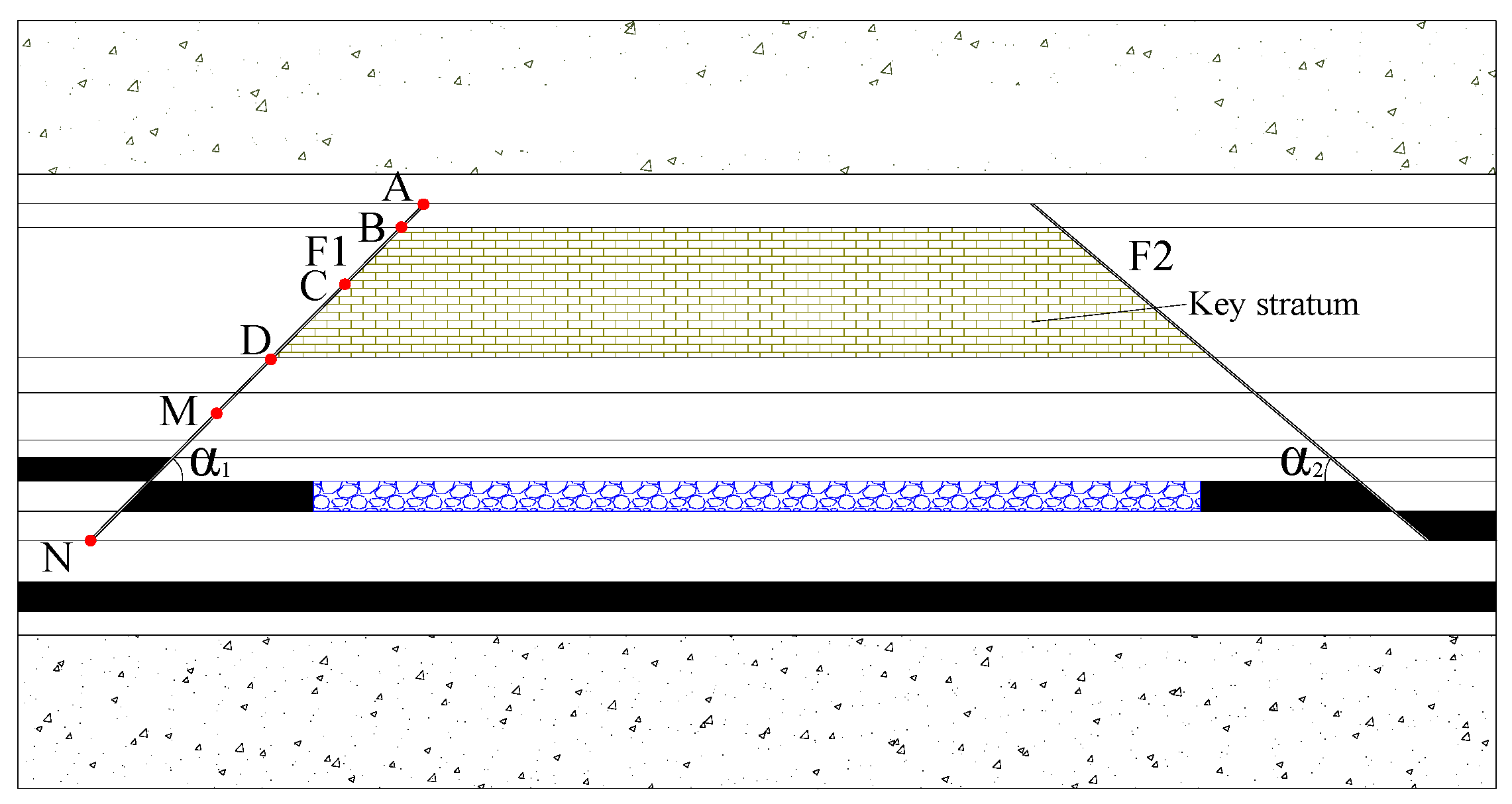
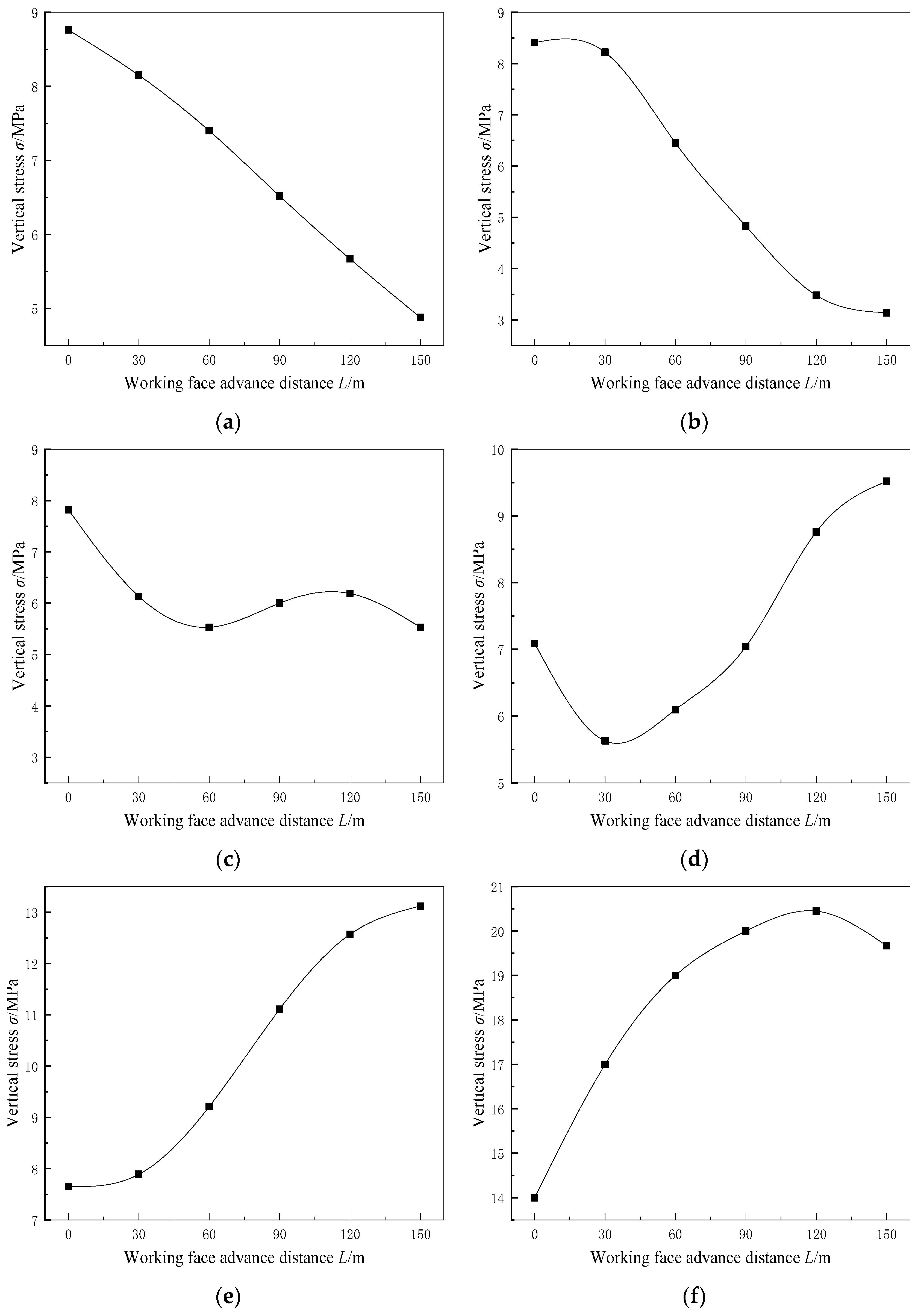
| MP(p1) (KN·m) | MP(p1) (KN·m) | MP(G) (KN·m) | MP(p2) (KN·m) | MP (KN·m) |
|---|---|---|---|---|
| 0 | −407.856 × 103 | 2.32 × 103 | 685.45 × 103 | −1090.99 × 103 |
| Rock Name | Thickness (m) | Bulk (GPa) | Shear (GPa) | σtension (MPa) | Fric. (°) | Coh. (MPa) |
|---|---|---|---|---|---|---|
| Siltstone | 26 | 9.94 | 6.5 | 3.2 | 35 | 2.4 |
| Fine sandstone | 5 | 9.82 | 6.7 | 1.6 | 32 | 2.5 |
| Sandy mudstone | 4 | 8.16 | 5.8 | 0.7 | 26 | 1.7 |
| Siltstone | 22 | 3.68 | 3.1 | 0.56 | 20 | 2.4 |
| Sandy mudstone | 6 | 8.16 | 5.8 | 0.7 | 26 | 1.7 |
| Fine sandstone | 8 | 10.6 | 9.1 | 2.2 | 32 | 2.0 |
| Siltstone | 3 | 9.94 | 6.5 | 3.2 | 30 | 2.4 |
| Silty mudstone | 4 | 8.16 | 5.8 | 0.7 | 26 | 1.7 |
| #1 coal seam | 5 | 3.22 | 1.0 | 0.6 | 25 | 0.2 |
| Silty mudstone | 5 | 8.16 | 5.8 | 0.7 | 26 | 1.7 |
| Fine sandstone | 7 | 9.82 | 6.7 | 1.6 | 32 | 2.0 |
| #2 coal seam | 3.2 | 3.22 | 1.0 | 0.6 | 25 | 0.23 |
| Sandy mudstone | 4 | 8.16 | 5.8 | 0.7 | 26 | 1.7 |
| Siltstone | 26 | 9.94 | 6.5 | 3.2 | 35 | 2.4 |
| Fault zone | 1.2 | 0.0083 | 0.0038 | 0.002 | 15 | 0.30 |
Disclaimer/Publisher’s Note: The statements, opinions and data contained in all publications are solely those of the individual author(s) and contributor(s) and not of MDPI and/or the editor(s). MDPI and/or the editor(s) disclaim responsibility for any injury to people or property resulting from any ideas, methods, instructions or products referred to in the content. |
© 2024 by the authors. Licensee MDPI, Basel, Switzerland. This article is an open access article distributed under the terms and conditions of the Creative Commons Attribution (CC BY) license (https://creativecommons.org/licenses/by/4.0/).
Share and Cite
Guo, H.; Yu, W.; Wu, G.; Li, K.; Liao, Z. Mechanism of Stratum Instability and Dynamic Deformation under Discontinuous Boundary Conditions. Appl. Sci. 2024, 14, 1441. https://doi.org/10.3390/app14041441
Guo H, Yu W, Wu G, Li K, Liao Z. Mechanism of Stratum Instability and Dynamic Deformation under Discontinuous Boundary Conditions. Applied Sciences. 2024; 14(4):1441. https://doi.org/10.3390/app14041441
Chicago/Turabian StyleGuo, Hanxiao, Weijian Yu, Genshui Wu, Ke Li, and Ze Liao. 2024. "Mechanism of Stratum Instability and Dynamic Deformation under Discontinuous Boundary Conditions" Applied Sciences 14, no. 4: 1441. https://doi.org/10.3390/app14041441





